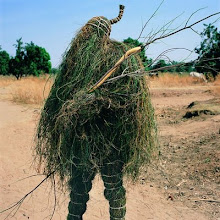As I opened the first small hive a familiar fetid stench wafted up and made me gag a little. American Foulbrood. We had this last winter and I think it came from some used equipment I had stupidly bought from a beekeeper in Guerneville when I first was starting. I thought it was so smart to buy frames with comb already built out. Less work for the bees. They could just move in and start laying eggs and putting up honey and pollen. Well, this also means that whatever diseases the previous hive had would persist in the wax and pass on to the next colony of bees that inhabited the used boxes and frames. I bought them for $50 bucks each. And now I know that for the exact same price I could have bought brand new already built and painted boxes with frames from the beekeeping suppliers Dadant and Mann Lake. Live and learn.
Meanwhile, I had introduced one and possibly two problems into my precious healthy hives. American Foulbrood and Varroa mites. American Foulbrood is a bacterial disease that spreads by spores. It is an awful disease if you are honey bee. It has no effect on humans aside from causing grief and a lot of extra work. What happens is during cool damp weather the already present spores become active and get into the cell where an egg is laid. As soon as the larvae is capped in its cell the spore starts to multiply and consume the larvae. When the worker bees clean out the gooey mess of the unfortunate larvae zillions of spores explode all over the hive and get on the worker bees and in the honey and everywhere. It is not long before every single larvae is dead and the hive dies out without new bees to replace the aging bees. And that many dead and dying larvae make for a very smelly situation. Some people say it smells fishy, others say like stinky socks. I think it just smells like dead bugs. Lots of them. Rotting.
Aside from the stink, which some people cannot detect, you can also tell you have this bacteria in your colony if you see cracked and sunken capped cells. And if you poke a little toothpick into the sunken cell you will pull out brown dead larvae goo that has the consistency of snot.
Check and check.
 In the photo above you can see a very sparse laying pattern
In the photo above you can see a very sparse laying patternand a few young dead bees that did not make it out of their cells.
Below you can see the cracked and sunken capped cells.
I did not get a picture of the snot goo but you all know what that looks like, right?

To make matters worse, as the colony gets weaker and unable to defend its hive, bees from stronger hives begin to come in and rob them of their honey, thus bringing the spores into their own healthy colony. This disease can wipe out hives in a matter of a few weeks.
Which is exactly what my strongest remaining hive, the new star of the show, was in the process of doing. It too had the telltale signs of AFB. The other two weaker hives were still healthy and minding their own business, lucky for them.
I did not have a lot of time or resources to deal with this problem. In two days I would be driving to Yosemite with friends for a long Thanksgiving weekend. And those days were completely packed with work related stuff and packing for the trip. I had to think fast and do whatever needed to be done today. This reminded me of something my friend with a 9 year old said to me one day. She said, I love having kids, but imagine that in your home you have this little thing that constantly explodes last minute projects all around you on top of the regular stuff. "Oh by the way, I need 40 decorated cupcakes for tomorrow morning. And my science project is due tomorrow." This is sort of like having 5 colonies of bees. Except, hopefully your kid does not abscond and move out in winter or completely die of a bacterial spore while you are inside watching TV.
Opening up the other hives gave me an idea of what I had to work with. Plenty of frames with pollen and capped honey to get them through the winter. Now I needed a refresher course on how to effectively clean the spores out of the two infected hives.



No comments:
Post a Comment